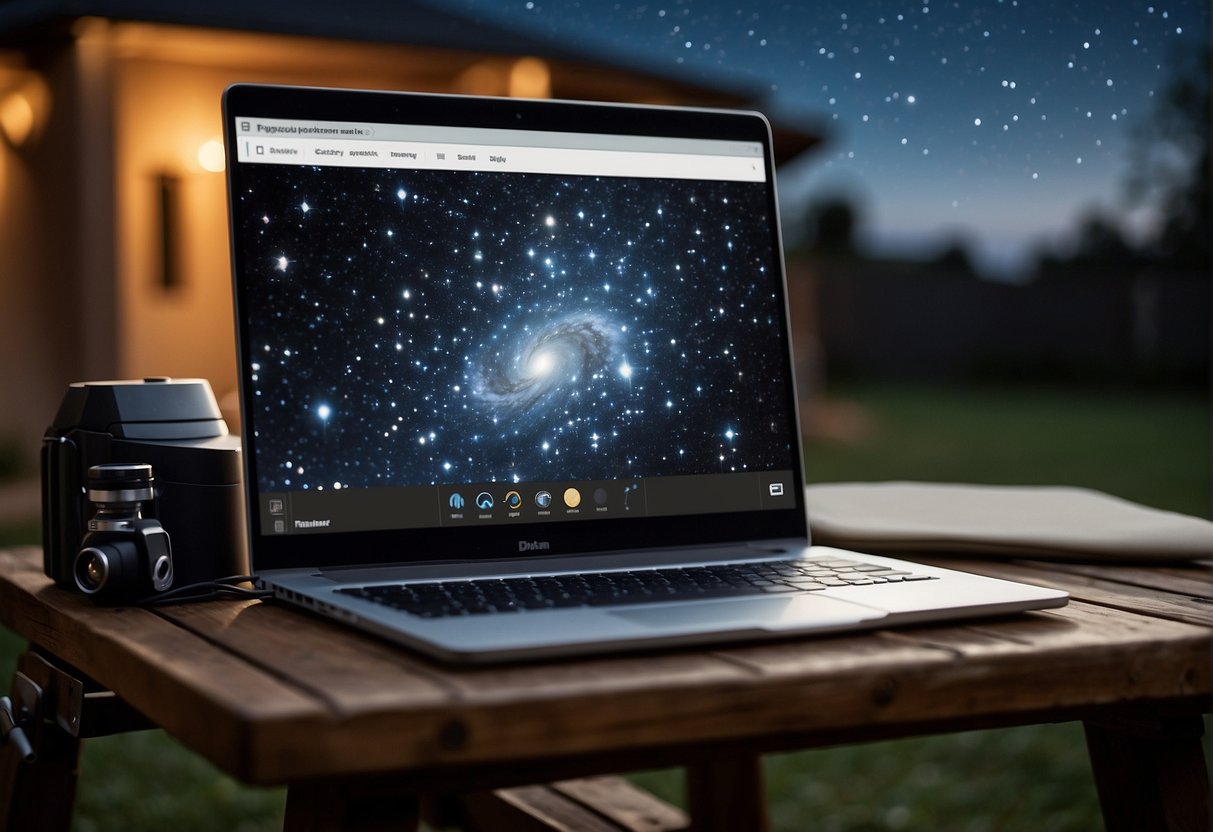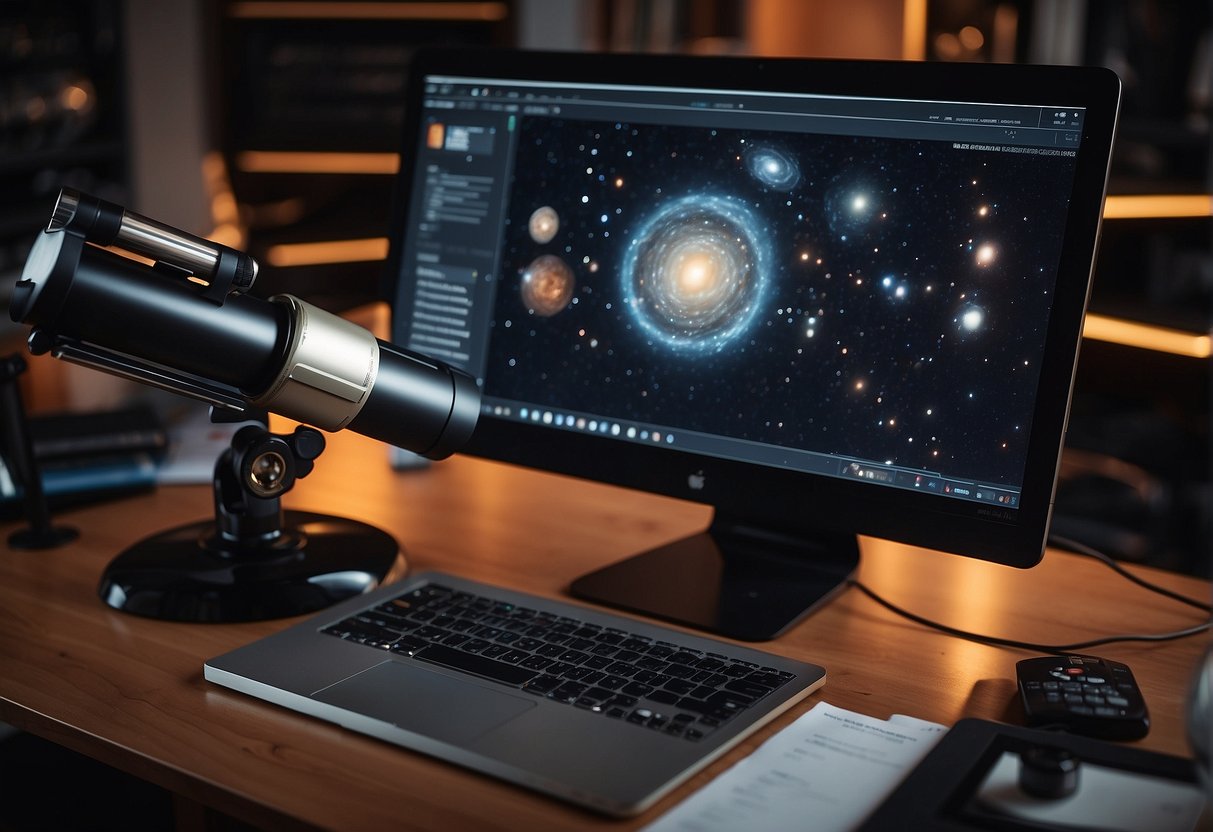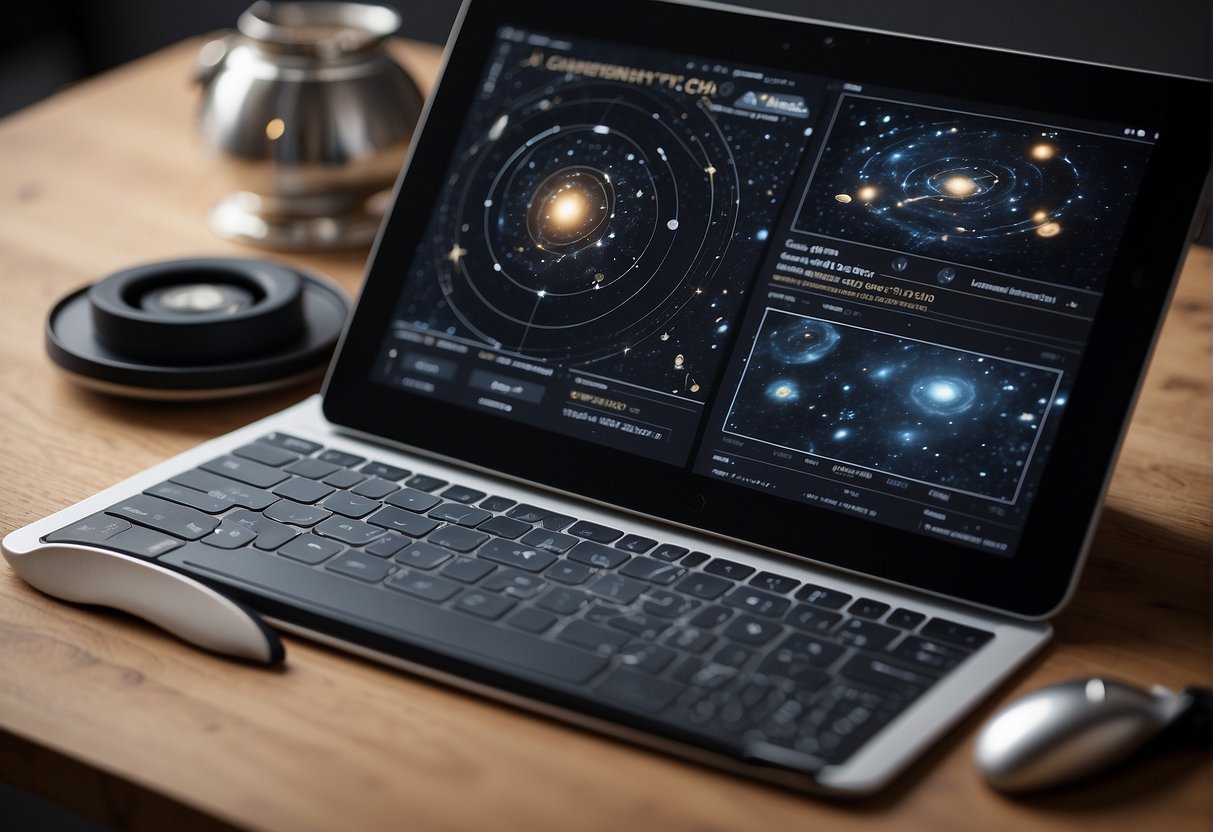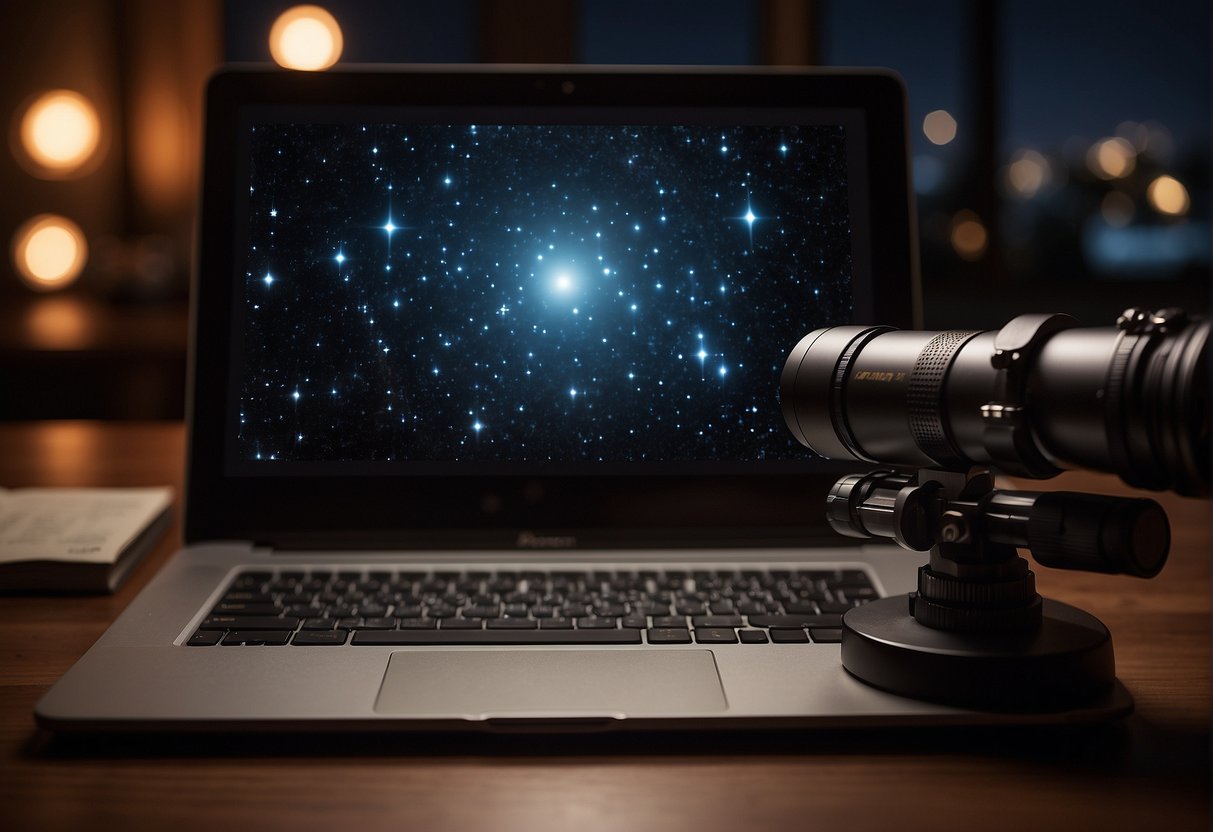
Astronomy Software for the Amateur Astronomer: The night sky has fascinated humans for millennia, a vast canvas where the stories of the universe unfold. For the amateur astronomer today, the tools to unlock these celestial secrets are more accessible than ever, thanks to an array of sophisticated astronomy software. These programs provide enthusiasts with the means to understand the cosmos better, offering detailed star maps, planet positions, and even resources for astrophotography. They come in various forms—from desktop applications to mobile apps—ensuring that the sky’s wonders are just a click away, whether one is in the field with a telescope or planning the next stargazing session from home.

Integrating such software with telescopes can transform the amateur astronomy experience. Users can control their telescopes with their computers or smart devices, automating the tracking of celestial objects. Furthermore, for those with a keen interest in astrophotography, software options exist that can assist with capturing the night sky’s beauty through long-exposure images. These tools not only make observational planning more efficient by including features like weather forecasting but also serve as educational platforms, introducing beginners to astronomy basics and answering frequently asked questions.
Exploring the cosmos begins with a grasp of the night sky, a fundamental aspect of astronomy that links constellations, stars, and the motions of celestial bodies. The following subsections will equip amateur astronomers with the essentials to map the heavens and follow the ballet of the planets.
The celestial sphere is dotted with stars that form patterns known as constellations. These shapes have served as celestial navigation aids for millennia and are pivotal to modern stargazing. Familiarizing oneself with notable constellations such as Orion, Ursa Major, and Cassiopeia lays the groundwork for a robust astronomical education.
Apps like Sky Safari and Stellarium are excellent digital tools that can help in identifying and learning about these constellations and specific stars within them. They provide interactive maps that can be used in real-time to match the night sky’s configurations to their stellar depictions.
The moon phase is a crucial aspect of the night sky, changing nightly and revealing the intricate dance between Earth, the moon, and the sun. The phases range from new moon to full moon, cycling approximately every 29.5 days. Monitoring these phases is important for understanding the celestial dynamics and planning observations of other celestial bodies.
Planetary movements, on the other hand, are observed as the planets traverse across the sky along the ecliptic plane. Each planet, including those in our solar system, can be tracked with precision, appearing to move against the backdrop of more distant stars. This motion is key for recognizing planets such as Jupiter, Mars, Saturn, and Venus at various times of the year. Tools such as planetary ephemeris included in some astronomy software can provide highly accurate charts of these movements.
When embarking on the journey of amateur astronomy, selecting the right software can enhance one’s stargazing experience. Criteria such as ease of use, feature set, and compatibility are critical for users of all levels.
For those new to astronomy, finding software with a user-friendly interface is vital. Stellarium is a prime example, offering a straightforward platform for users to explore stars and planets with ease. The software provides a real-time sky map, which beginners can use to familiarize themselves with the night sky. Additionally, features like zoom options and clickable objects enable users to navigate and learn about different celestial bodies without feeling overwhelmed.
Experienced astronomers often require advanced tools to further their explorations. SkySafari offers extensive databases with millions of celestial objects and simulates the night sky for future dates and times, enabling advanced users to plan their observations. On the other hand, software like Starry Night can simulate sky observations for different locations, times, and dates. Integration with telescope hardware through interfaces like INDI and APT allows for sophisticated control, tracking, and planning, essential for detailed astronomical studies including galaxies and distant star clusters.

Amateur astronomers have access to an array of software solutions that seamlessly integrate with telescopes and various astronomical equipment. These tools transform personal devices into advanced observatory systems.
Modern astronomical software enables users to control telescopes with precision. Programs compatible with ASCOM standards for Windows, or INDI for Linux and macOS, provide a universal approach to telescope control. Users can command their telescopes to track celestial objects, align with selected stars, and synchronize with planetary databases.
Beyond telescopes, software integration extends to a suite of accessories and add-ons. Automated programs can control DSLR shutters for timed exposures, manage filter wheels for astrophotography, and even guide binoculars for wide-field scanning of the night sky.
By leveraging these integrated software solutions, amateur astronomers can enjoy a streamlined and enhanced observational experience.
Astrophotography merges the intricacies of astronomy with the art of photography, enabling the capture of celestial phenomena. This section explains the software amateur astronomers use to process images and plan their astrophotography sessions.
The crux of astrophotography lies in the ability to enhance raw images to reveal the wonders of the cosmos. Image stacking software, such as Registax, merges multiple photos to improve the signal-to-noise ratio—a technique vital for highlighting dim celestial details. For Mac users, Lynkeos simplifies this process. Moreover, software like FITS Liberator is essential for processing FITS files, a common format in astrophotography, allowing for detailed post-processing work.
A successful astrophotography session demands careful planning. Utilizing astronomy apps greatly assists in identifying the right time and location for capturing astronomical events. For instance, SkySafari serves as a valuable tool, offering extensive celestial databases and the ability to control telescope mounts—an asset for aligning shots of stars and planets. Additionally, accurately timing the DSLR shutter release is crucial, often relying on software that synchronizes with astronomical events, ensuring precise exposures and reducing chances of image blur due to Earth’s rotation.

Amateur astronomers now have the universe at their fingertips thanks to a selection of sophisticated astronomy apps for mobile and tablets. These applications make stargazing more accessible, informative, and engaging than ever before.
The advancement of mobile technology has given rise to a host of astronomy applications that transform your smartphone or tablet into a mobile observatory. Stellarium Mobile is a free star map that offers a detailed view of the night sky, enabling users to identify stars, constellations, and other celestial bodies with ease. For those seeking more advanced features, SkySafari 7 Plus is a paid option that provides an extensive astronomy guide and powerful telescope control.
The accessibility and convenience of these apps have revolutionized the way amateur astronomers can observe the night sky, turning every clear evening into an opportunity for discovery. With user-friendly interfaces, these apps cater to both beginners and experienced stargazers.
Stargazing is no longer confined to backyard telescopes. With today’s apps, amateurs can enjoy the stars anytime, anywhere. Stellarium Mobile enables night sky exploration on-the-go, representing planets and constellations in real time on your screen. For more advanced planning, Clear Outside offers detailed meteorological forecasts to help users find the best times for stargazing.
The beauty of these applications lies in their portability and convenience, offering personalized astronomy experiences whether you’re in a city park or on a remote mountaintop.

Astro enthusiasts leverage software to conquer the complexities of the cosmos, navigating celestial events with precision and sharing their experiences with the stargazing community.
Amateur astronomers harness astronomy software to meticulously plan their stargazing sessions. These programs offer an array of tools, such as star maps and databases of astronomical events, to forecast the best observing opportunities. With features that account for night vision preservation—reducing screen brightness and using red hues—observers can maintain their dark-adapted eyesight while exploring the night sky. Notable software such as Deep-Sky Planner aids users in plotting their nightly adventures, ensuring they don’t miss a passing ISS sighting or a spontaneous meteor shower.
Once the planning is complete, recording observations becomes crucial for any diligent skywatcher. Modern software allows for detailed logs of each session, from the objects observed to the equipment used. This documentation is vital, not only for personal records but also for contributing to broader astronomical studies. Observers can share their findings with a global community via platforms compatible with OpenAstronomyLog, elevating collective knowledge. Additionally, astronomy apps often provide the means to share observations and photographs with fellow enthusiasts, fostering a connected, informed, and passionate online space community.
Access to accurate weather forecasts is essential for amateur astronomers who rely on clear skies for stargazing. Weather Forecasting Integration in astronomy software takes into account variables like cloud cover, visibility, and atmospheric conditions to increase the chances of a successful night under the stars.
Weather plays a crucial role in stargazing. Amateur astronomers must stay informed about the atmospheric conditions that can affect visibility. Software such as Astrospheric fulfills this need by updating its forecasts multiple times a day, including crucial data like wildfire smoke which can inhibit viewing capacity.
Clear Outside is another specialized weather forecasting app tailored for astronomers. It provides detailed hourly forecasts, helping observers plan sessions by indicating when the sky will be most transparent. This level of detail helps stargazers avoid overcast conditions and optimize their observing time.
These integrations are becoming more sophisticated, offering comprehensive data so that one can capitalize on the best possible conditions for astronomy. These advancements represent an exciting development in the field of amateur astronomy, significantly improving the planning of observational activities.
Modern astronomy software provides an array of educational tools that cater to both students and astronomy enthusiasts. These tools are designed to aid in understanding complex astronomical concepts through interactive learning modules and realistic simulations.
Astronomy software now often includes interactive modules that aid students and enthusiasts in their quest for knowledge about the cosmos. Educational tools within these programs facilitate hands-on learning experiences, allowing users to engage in activities such as tracking the International Space Station (ISS) or planning observations with software like Stellarium or Software Bisque. They can visualize celestial events, which makes complex astronomical phenomena more comprehensible.
Interactive applications might also offer quizzes or structured lessons, enabling learners to assess their understanding and progress. Programs like Voyager and Carte du Ciel allow individuals to explore different aspects of the night sky, from constellations to celestial coordinates, enhancing their navigation and identification skills.
Virtual planetarium and simulation software create immersive experiences that transport users to any point in the known universe. This category of software acts as a powerful educational platform, especially for those who have limited access to a physical planetarium. With tools such as LunarPhase, users can study the Moon’s phases and libration, observing the lunar surface as it appears at various times and locations.
Simulation software may include features that accurately depict stellar and planetary locations, taking into account factors like aberration and light travel time to show the night sky as seen from Earth. For example, Software Bisque provides a comprehensive suite of observatory controls and data, thus serving both educational and practical purposes for users managing remote telescopes.
In essence, these educational tools in astronomy software greatly enhance the learning experience for those passionate about space, offering immersive and interactive methods to study the night sky and beyond.

Navigating the vast array of astronomy software available to amateurs can be daunting. This section aims to address the most common inquiries with specific, current, and accurate information.
For Windows 10 users, Stellarium is highly regarded for its realistic sky simulation, ease of use, and extensive feature set suitable for both beginners and experienced astronomers.
Yes, there are several reputable free options. Celestia is a popular choice, offering a real-time space simulation that lets users explore the universe in three dimensions.
Software such as STAR Atlas is recommended for telescope control and astrophotography, providing robust tools for night sky exploration and automated telescope guidance.
Beginners can start by using user-friendly programs such as Stellarium or online FAQs such as the Astronomy Reference Guide on Sea and Sky, which offer foundational knowledge and interactive experiences with the night sky.
Top-rated programs include Starry Night and Space Engine, both offering immersive visuals and comprehensive celestial databases for in-depth space simulation.
While Starry Night itself is not typically available for free, similar programs like Stellarium can be downloaded at no cost and provide excellent functionality for stargazing and learning astronomy fundamentals.